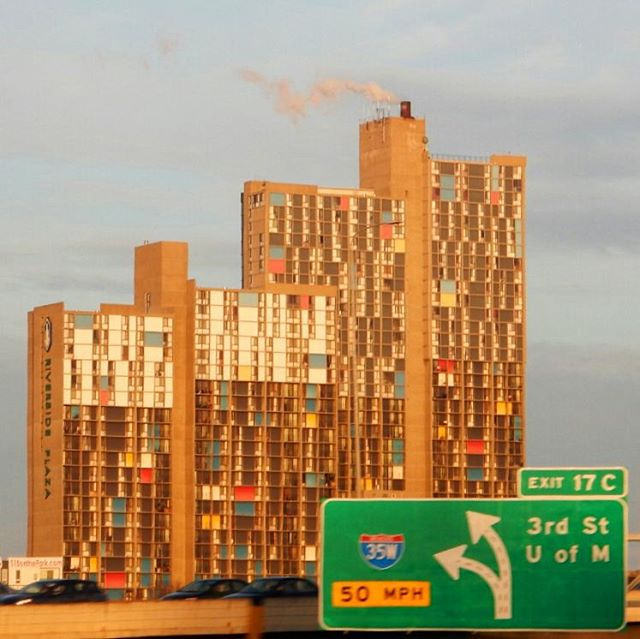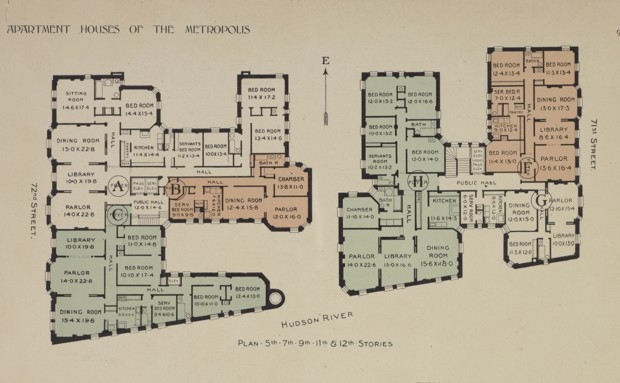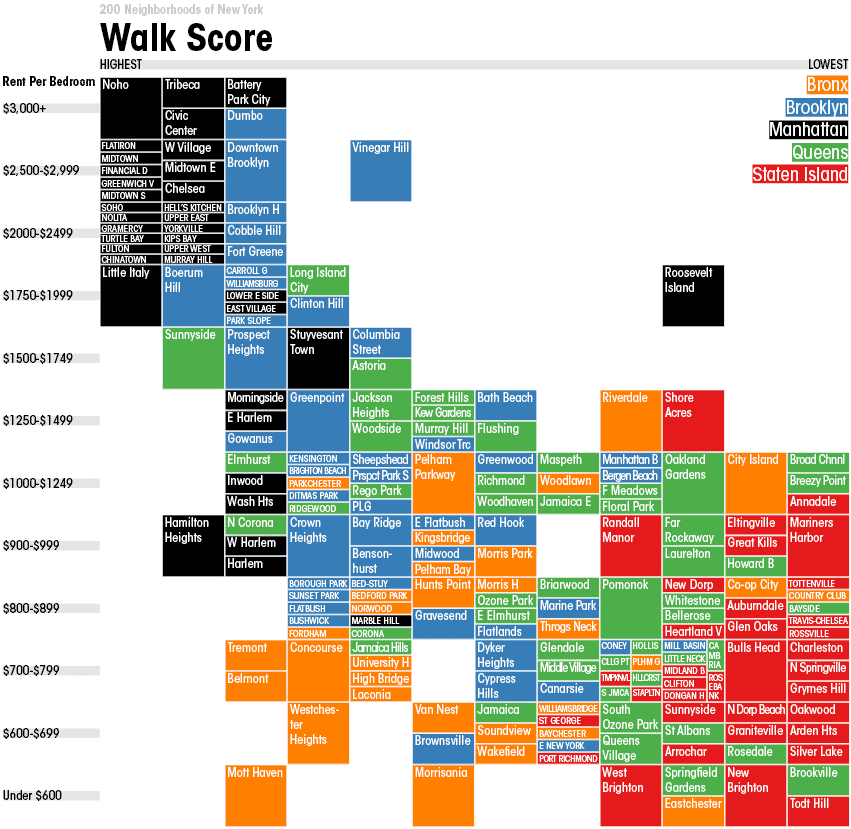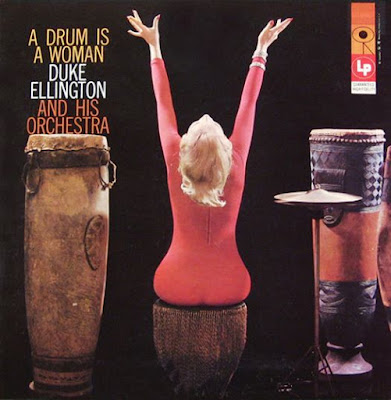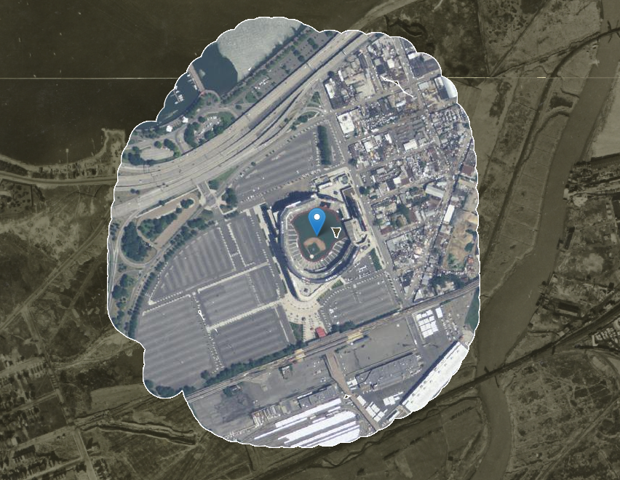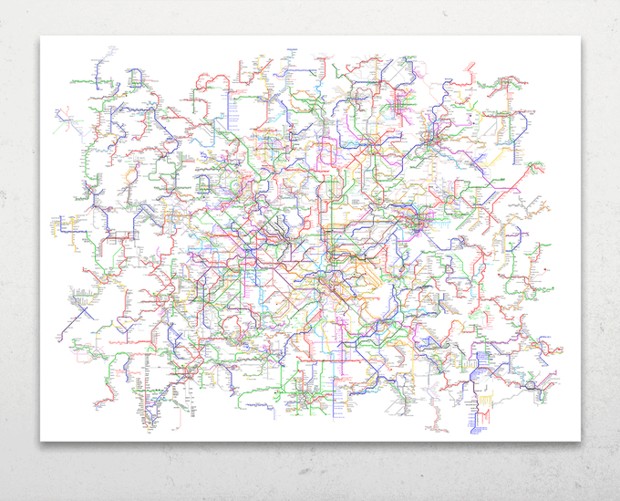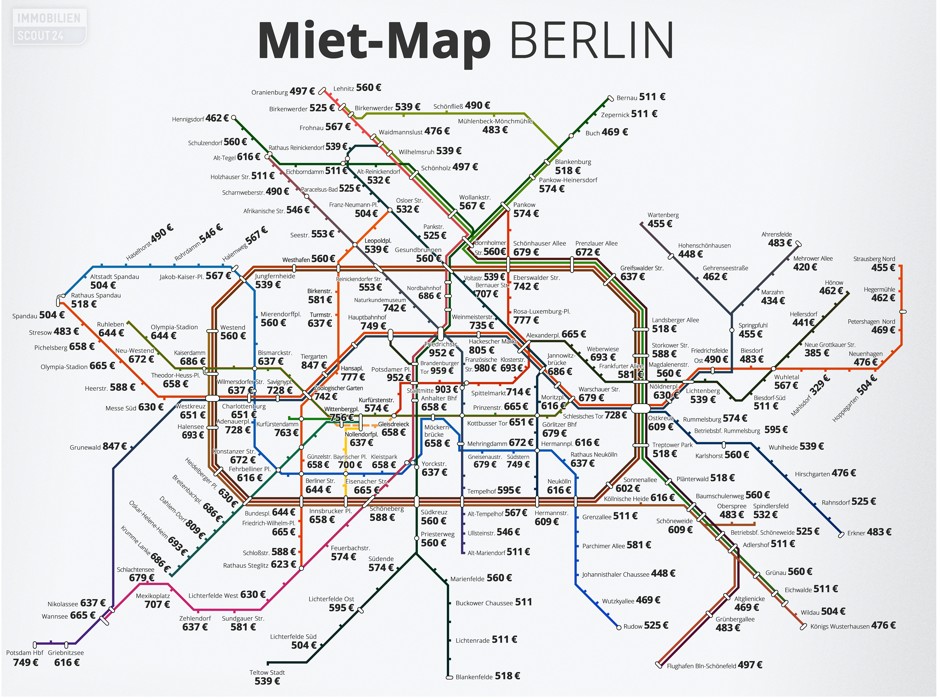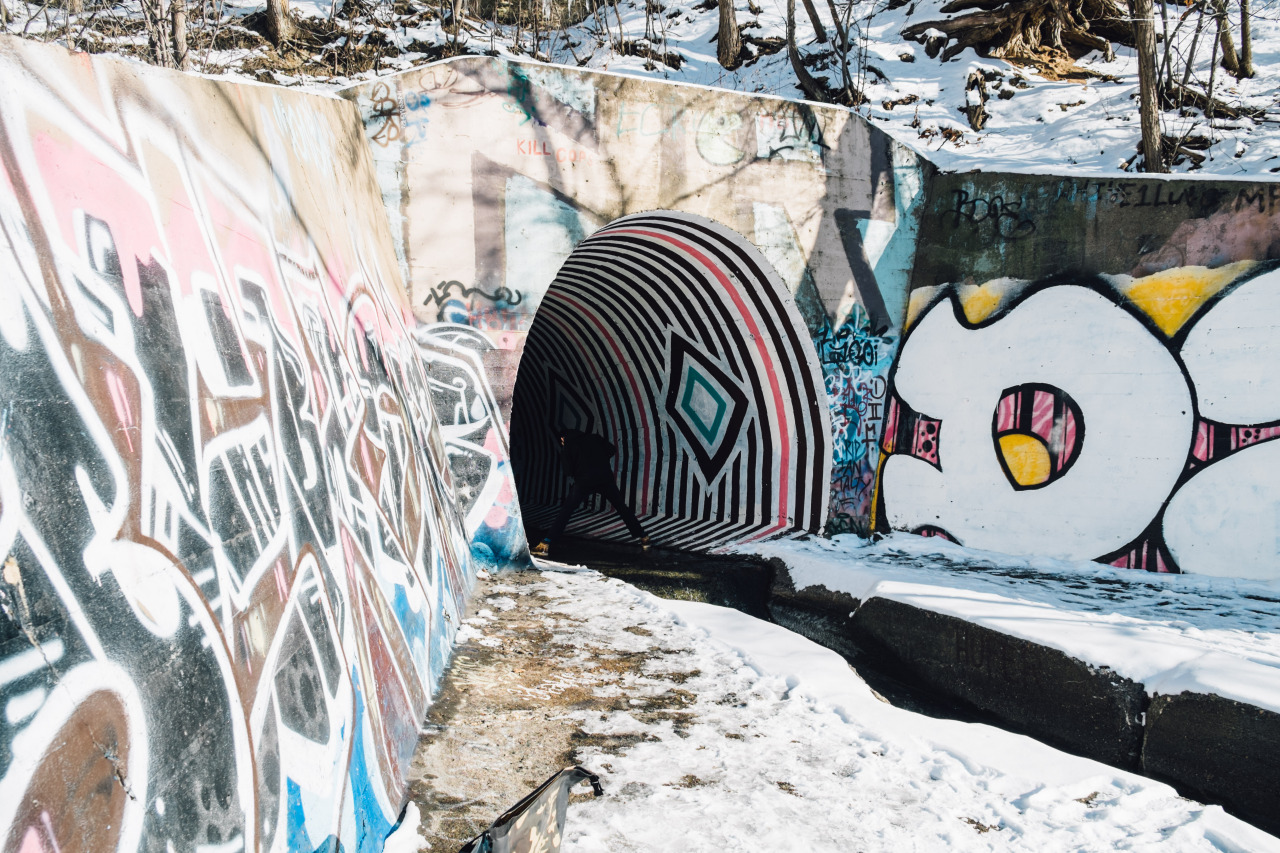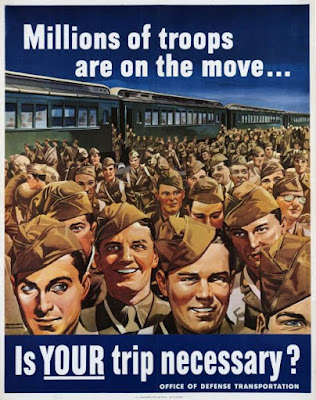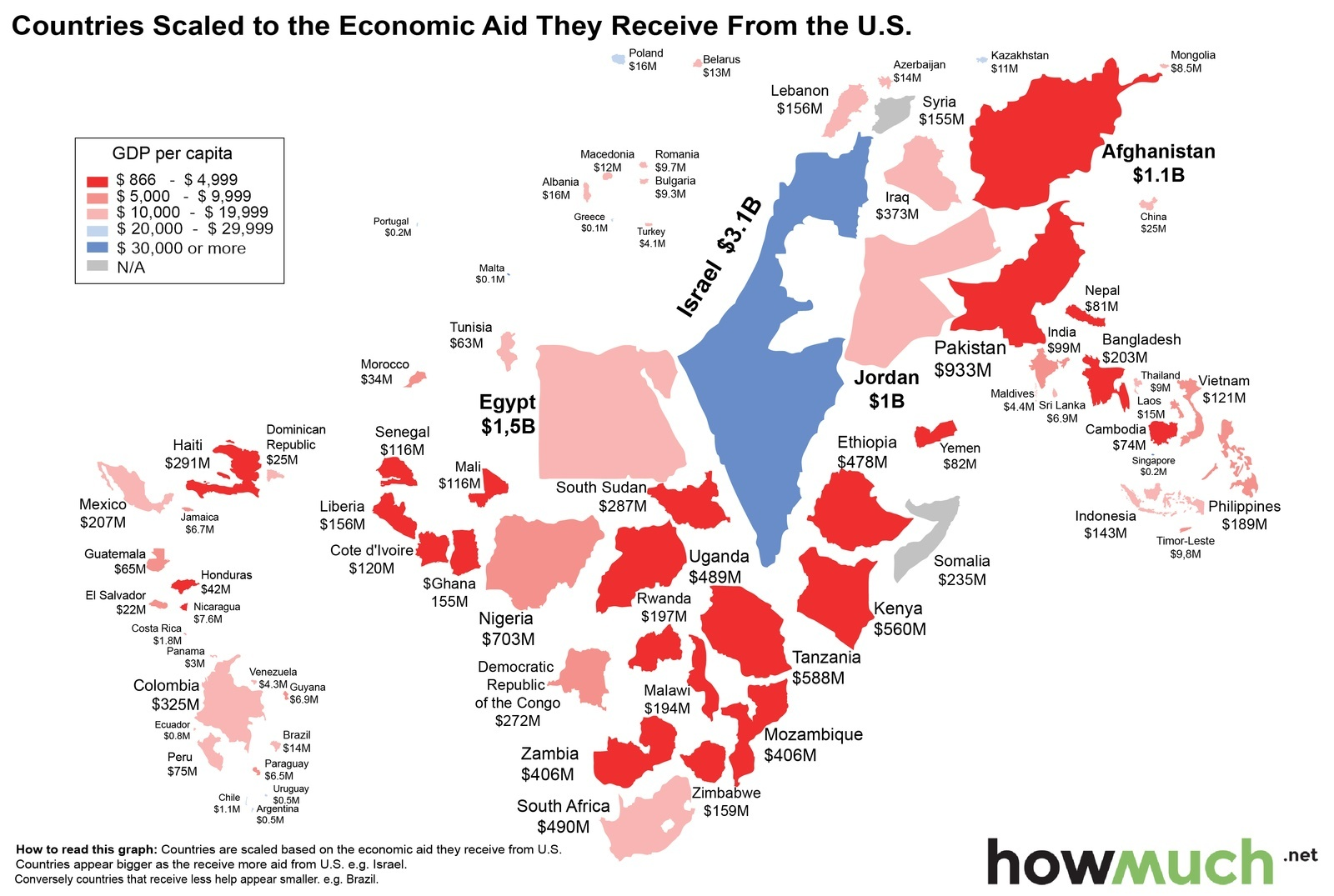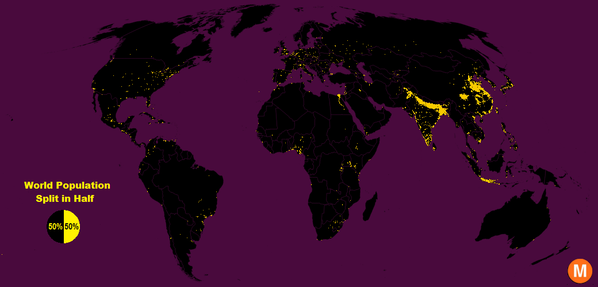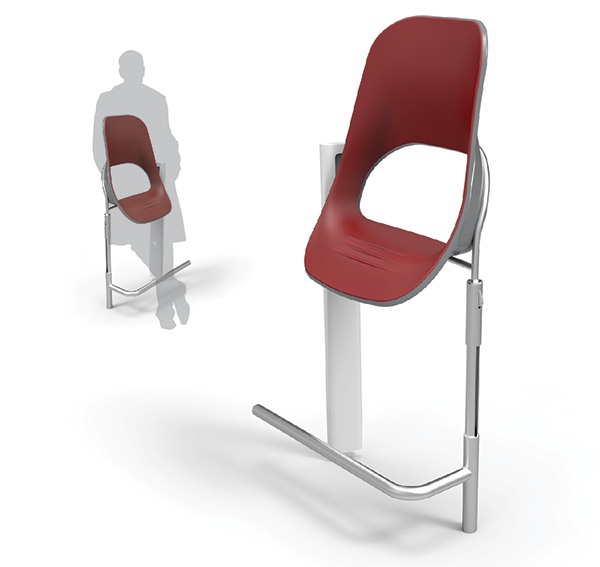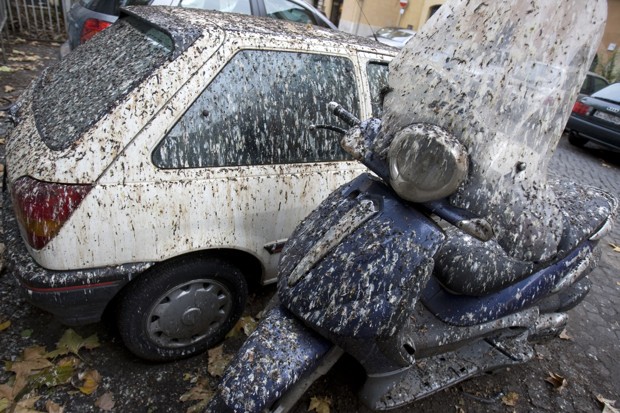 |
| [A Villager in a bag off West 7th Street.] |
[Basically the problem is that the best source of Saint Paul streets & sidewalks news is the Highland Villager, a very fine and historical newspaper. This wouldn't be a problem, except that its not available online. You basically have to live in or frequent Saint Paul to read it. Until this newspaper goes online, sidewalk information must be set free. See also: Three Reasons Why I Re-Blog the Highland Villager.]
Headline:
MN United FC, RK Midway plan a thriving village around new pro soccer stadium
Author: Jane McClure
Short short version: A new soccer stadium is being built at the site of a vacant lot and strip mall superblock in the Midway, and there are some "conceptual designs slowly coming into focus."
[What ever that means.] Terms used include: "vibrant district", "cohesive project", "catalyst", "urban village", and "real neighborhood." Existing businesses
[like the bowling alley] will relocate or be remodeled in the new development, hopes a City official. Best quote from team owner: "this is not going to be some sort of behemoth."
[Referring of course to the Death Star across the river.]
Headline:
UPDC submits its vision for stadium site
Author: Jane McClure
Short short version: The neighborhood group by the stadium site had a "visioning" and would like to see safety improvements for peds and bikes, less panhandling and crime, less noise and litter, and do not want to see the new development ignore the community. Also "greater transparency."
[So, make the stadium out of glass?]
Headline:
Neighbors push for positive change on High Bridge
Author: Loren Green
Short short version: Every so often, someone jumps off a high bridge [
named the "high bridge"] over the river which is slated for a "resurfacing." Some concerned neighbors had a public forum about mental health and preventing suicide on the bridge. There is discussion about different strategies including higher railings. After a high school student jumped last year people put ribbons on the bridge. Some would like stencils with a hotline phone number, or to make the bridge "more accommodating" which would increase foot traffic and hopefully decrease jumping.
[I live right by this bridge and am just curious about whether any of this would work. I'm a bit skeptical, though improving the sidewalks, by widening them I would think, and maybe combining the bike path with the sidewalk somehow, would be an improvement. Just yesterday I saw two (both) cyclists going up the bridge using the sidewalk, as I also do ever since I was hit by a car on this bridge during the wintertime because the bike lane decreases in width by half due to snow and ice accumulation.] One person suggests "personal contact" is important. Little Free Libraries
[check it] are another idea, or more artwork.
 |
| [A memorial on the High Bridge this summer. Note: this is a picture I took; the Villager does not include any of memorials.] |
Headline:
Updated Palace to be unveiled Jan. 30; West End center's expansion deemed well worth the wait
Author: Jane McClure
Short short version: A rec center that was being remodeled for a long time, and whose money kept getting diverted, is finally complete. The building had been from 1974. There will now be windows. CM Thune gets the credit, apparently. It has a "sleek, modern design," an "energizing color palette," and an "eye-catching new roofline."
Headline:
SUPC opposes plan to replace Hague church with pre-school
Author: Jane McClure
Short short version: Someone wants to tear down an empty church and build a pre-school. Neighbors would rather re-use the old building.
Headline:
Discussion delayed on licenses for new Lexington Restaurant
Author: Jane McClure
Short short version: An old fancy restaurant on Lexington and Grand that's been closed for years would like to remodel and open a patio on the roof but neighbors are worried about music and/or "screening." Signs would have to be installed. It's been delayed because the owners couldn't attend the neighborhood group meeting.
Headline:
Planning Commission denies permit for CVS drive-through
Author: Jane McClure
Short short version:
[Yes we did. Unanimously, I might add. It's going to be appealed to the city council.] CVS wants to re-use an old Whole Foods building but add a drive-thru along the sidewalk. It was denied.
Headline:
HDC supports Snelling Avenue median with on-street parking
Author: Jane McClure
Short short version: A neighborhood group approved the idea for a new median on Snelling by Highland Parkway as long as one-side of the street keeps on-street parking.
[Safety for crossing Snelling is a great idea and long overdue. The median by Macalester is a huge improvement, and we should be adding these at other places, like between Summit and Selby.] Neighbors are concerned about parking.
Headline:
Variances are undermining residential design standards; Ward 3's new guidelines for home construction are finding few followers
Author: Jane McClure
Short short version: The city passed new "residential design standards for Ward 3 because of tear-downs and remodeling of homes, but the Board of Zoning appeals has granted "more than a half dozen" variances to the standards. Quote: "BZA members have made it clear that they do not like the new residential design standards and do not like that they are different from the design standards in other parts of the city."
[Well why did the city approve them then?] Quote from neighborhood group lady on the lack of enforcement: "That's been a cause for frustration." Article includes
[way too much] detail about the standards
[which are very boring for anyone who doesn't own a home in this part of town].
Headline:
Pedestrian crossing eyed for 110-Dodd
Author: Kevin Driscoll
Short short version: In the suburbs [where I'm from, right up the street fromwhere I grew up] the city of Mendota Heights might spend a lot of money building a pedestrian bridge or tunnel under a busy freeway, 1000 feet east of Dodd road.
[The existing crosswalks and ped access here is not the worst I've ever seen, but sure why not. If you're going to spend $3M in Mendota Heights, why not spend it on this.] Quote from Mayor: "It could be a landmark connecting the two commercial areas, further creating a downtown."
[LOL at "Downtown", but I guess. I remember when this whole intersection was just a 7-Eleven, a McDonalds, and a gas station.]
Headline:
With deadline nearing, questions remain about using TIF at Ford site
Author: Jane McClure
Short short version: The city has to decide if its going to use tax-increment financing to help fund development at the Ford site. It's already declared some TIF for the area in '13, but will need to extend it if it wants to go ahead. TIF needs to be approved b the legislature.
Headline:
City considers restoring parking on University
Author: Jane McClure
Short short version: A task force wants to put on-street parking back on University Avenue in certain sections, and completed a study to that effect showing that it would have minimal effect on traffic. It would only be in the evenings.
[I was just at the Dubliner for trivia last night and the parking lot was full. On-street parking would have been nice. The other reason to support this is because it would improve the pedestrian realm, adding a buffer.] Quote from local businessman: "we have businesses that have no off-street parking."
[Why not? Try it and if it doesn't work, don't do it any more.]
Headline:
City may allow accessory dwellings near the Green Line
Author: Jane McClure
Short short version: The Planning Commission will hold a public hearing on a new city ADU
[See this] policy.
[One sticking point is whether or not to allow ADUs to have separate staircases that are outside the house, exposed to the elements. The proposal would require internal staircases, which seems really expensive.] Some are concerned about the distinction between an ADU and a duplex.






































